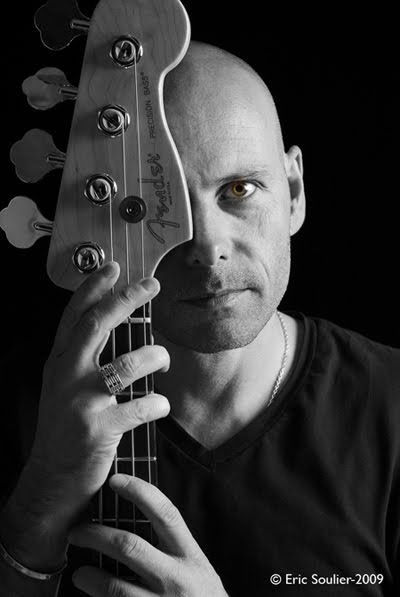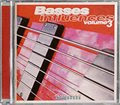Stephane Bertrand plays "Etranger" Live
Clandestin on "fnacmusic.com"
 French bassist, Stephane Bertrand's 2000 release Clandestin is a straight-ahead fusion effort centered around Bertrand's handywork on the bass. The eleven tracks on this CD are stylistically bound with a modern, contemporary, metro style of jazz fusion. The atmosphere that the music creates is at times refined, elegant and rich with jazz instrumentalism from Bertrand's bass, as well as the many supporting instruments that contribute. Notably, the piano segments of Claude Tedesco that trade off with Bertrand offer an appreciable level of sophistication that boosters the effort. In addition to the elegant aspect of the music, there is also an aggressive, fusiony aspect that is integrated in a few different places, such as on the third track "les hommes au drapeau noir" and the tenth track "dans le tourmente", that add another dimension to the music. On these particular tracks, the electric guitar makes a noticeable departure from the serene atmosphere that is pervasive throughout the album. The aggressive electric guitar on these track uses a distorted tone that makes a large contrast to the predominant lucidity of the refined bass and piano work. The fourth track, Leo, augments the sonic texture with some "Cool" jazz trumpet reminiscent of Miles, adding yet more dimension to the overall concept and feel.
French bassist, Stephane Bertrand's 2000 release Clandestin is a straight-ahead fusion effort centered around Bertrand's handywork on the bass. The eleven tracks on this CD are stylistically bound with a modern, contemporary, metro style of jazz fusion. The atmosphere that the music creates is at times refined, elegant and rich with jazz instrumentalism from Bertrand's bass, as well as the many supporting instruments that contribute. Notably, the piano segments of Claude Tedesco that trade off with Bertrand offer an appreciable level of sophistication that boosters the effort. In addition to the elegant aspect of the music, there is also an aggressive, fusiony aspect that is integrated in a few different places, such as on the third track "les hommes au drapeau noir" and the tenth track "dans le tourmente", that add another dimension to the music. On these particular tracks, the electric guitar makes a noticeable departure from the serene atmosphere that is pervasive throughout the album. The aggressive electric guitar on these track uses a distorted tone that makes a large contrast to the predominant lucidity of the refined bass and piano work. The fourth track, Leo, augments the sonic texture with some "Cool" jazz trumpet reminiscent of Miles, adding yet more dimension to the overall concept and feel.Overall, Clandestin from Stephane Bertrand provides some interesting, listen-worthy material for fans of contemporary, palatable fusion. The music provides a good overall listen for the audience and scores points for accessibility, graspable, focused vision, and clearly perceivable projection of concept and purpose. The musical style fuses an interesting array of elements spanning a wide range from classic jazz to trance mood jazz to smoothish, contemporary fusion to aggressive, edgy-toned fusion complete with fusion attack. All elements are integrated in an interesting manner that maintains a feasible balance of the disparate stylisms throughout.
It should be noted that if you do look further into this CD that the cover art is a little odd by American standards with the pasty portrait of Bertrand that is presented on the front and back. But, rest assured whatever artistic imagery that is projected by the cover art, the imagery is not something that dissuade your interest in the music. Probably, the idea of the cover art is to get across the idea that Bertrand is in touch with artistry and perhaps the bareness of the imagery of the cover art is intended to convey to the audience that Bertrand has laid himself bare to the listener in his music.
Christopher Ruel
Inscription à :
Commentaires (Atom)







